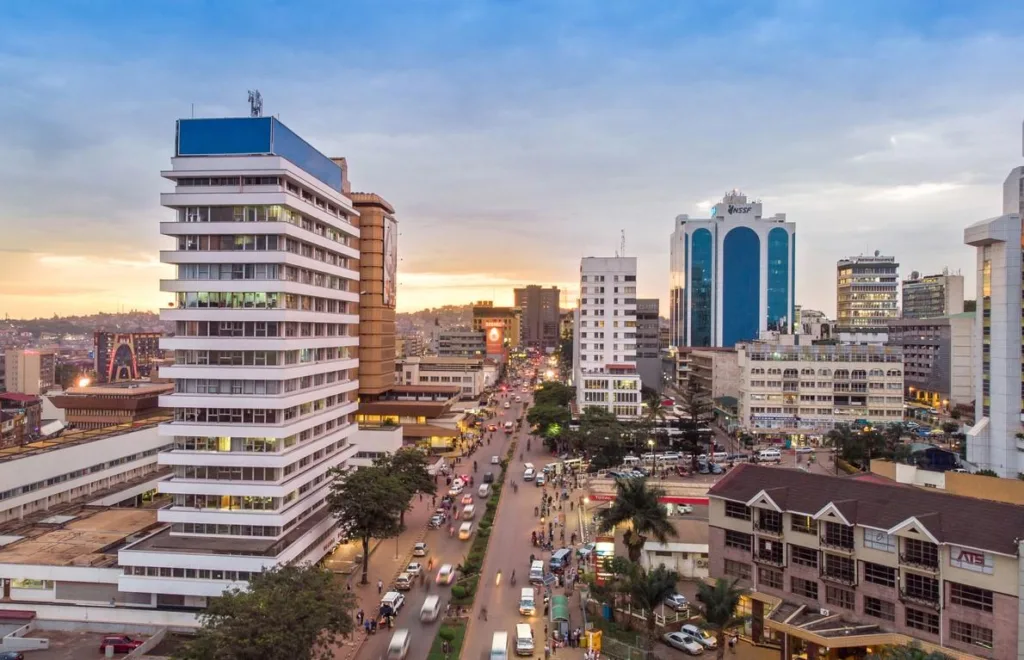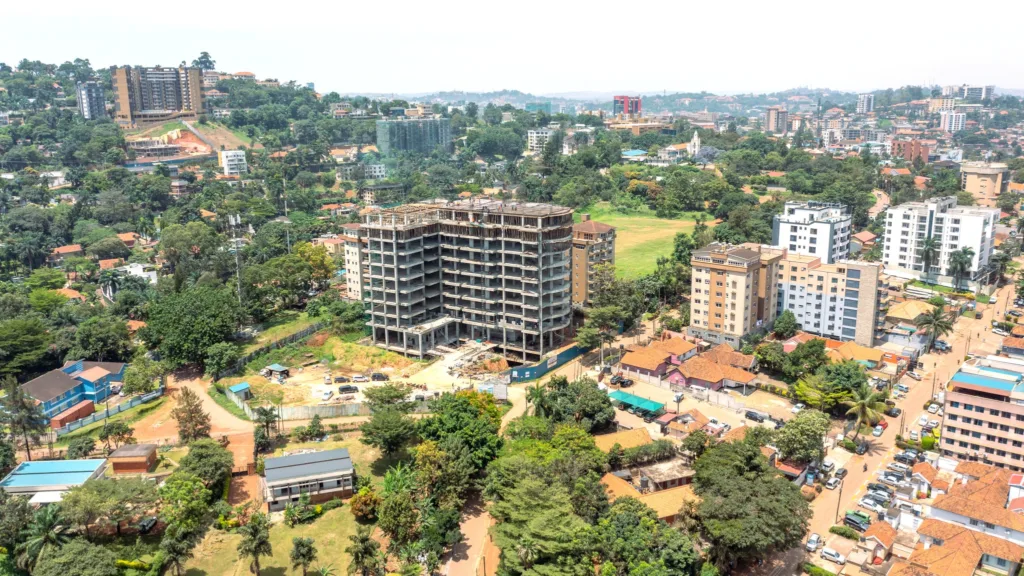Institutional investors and international buyers are starting to take a serious interest in Kampala’s prime real estate.
We don’t see every deal (they’re often private), but reports, market commentary, and the emergence of high-end developments all point to capital quietly flowing into areas like Nakasero and Kololo.
And they’re not just dipping a toe in. They’re positioning themselves ahead of what they see as Kampala’s next growth phase. They recognize something that’s easy to miss if you’re only watching headlines: the fundamentals here are strong – limited supply in prime neighborhoods, rising demand from high-net-worth individuals, and infrastructure improvements that are steadily lifting property values.
To these investors, Kampala looks a lot like Lagos around 2015 or Nairobi in 2018. Those were markets that were undervalued relative to their potential until international capital started flowing in and prices began to accelerate. The early movers in those cities made substantial gains because they bought at the right time, when the market hadn’t yet realized what was coming.
The pattern in Kampala is starting to echo that story. The city is attracting the kind of attention that signals the start of a more rapid revaluation. Prices in prime neighborhoods are climbing steadily, and the stage is being set for what market analysts sometimes call price discovery acceleration. Once more investors recognize the opportunity, the window for “pre-boom” pricing will close, and values could rise sharply.
Put simply: Kampala is entering a phase where being early matters. For those paying attention, the signals are all there – prime properties, rising demand, and growing international interest. The fundamentals are lining up, and anyone who waits too long risks missing the market’s next big move.
Kampala, the rise of a city.
This is a peek into what most developers miss about what’s happening in Kampala. They look at population growth, GDP numbers, basic stuff. But at VAAL, we dig deeper into wealth concentration – how rich people and international money are completely reshaping this city.
A look into the numbers.
Property prices in prime areas jumped 16% in Q1 2024/25. The previous quarter? Only 6.9%. And deeper market analysis reveals something more fundamental – it’s not just the speed that’s accelerating, it’s building momentum on itself.
Properties that sat on the market for a year in 2022 are now selling in a much shorter time. Often to buyers who’ve never even been to Uganda. Let us repeat that: international buyers are purchasing Kampala properties sight unseen.
Everyone talks about the 600 new luxury units coming to Nakasero, Kololo, and Naguru over the next two years. That’s a 14% supply increase, which should cool things down, right?
Nope. These developments are selling faster than ever. Which means demand is outpacing supply even with aggressive construction. That’s better than normal market behavior – this is clearly scarcity premium kicking in.
And Kampala is becoming a “regional wealth hub.” It’s not just more rich people being attracted; it’s the type of wealth that drives sophisticated property markets we notice coming in.
Urban Wealth Magnetism.
Serviced apartment demand jumped 12% in 2024.
Sounds boring until you realize what this actually means: successful people are making Kampala their permanent base for regional operations. And not merely tourists or short-term contractors. They’re establishing Uganda as their operational HQ for pan-African business.
And positioning Kampala as East Africa’s financial center isn’t just political rhetoric anymore. When we look deep into actual money flows, business registrations, and corporate relocations, Kampala is literally stealing market share from other regional centers.
This creates what economists call “urban wealth magnetism.” Successful people choose Kampala as their base, which drives demand for the kind of luxury properties that didn’t exist here five years ago.

Old vs New in Kampala.
This is where it gets really interesting for investors. We’re witnessing the birth of a completely new property category that never existed before. Right before our eyes.
Old School Kampala Luxury
Traditional luxury in Kampala meant big standalone houses in Kololo and Nakasero.
Land size, neighborhood prestige, and impressing other Ugandans. These properties worked for Uganda’s established elite who cared more about local status than international standards.
The value drivers were simple: bigger land = higher price, better neighborhood = more status. It was a local game for local players.

The New Game: International Standards at Local Prices
New Kampala luxury is different.
At VAAL, we call them “globally aligned residential products.” These are properties designed for wealthy people who could live anywhere but choose Kampala. It’s about meeting the expectations of globally mobile wealth.
Traditional luxury gets expensive through land size and location. Modern luxury commands premium prices through amenities, technology, and service standards you’d expect in London or Dubai.
And there’s the mental shift that’s at the forefront of everything: Old Kampala luxury was about impressing other Ugandans. New Kampala luxury is about meeting international standards while getting East African advantages – great climate, lower costs, business opportunities.
This psychological change drives “specification evolution.” Each new luxury development has to exceed the previous one, not just by local standards, but by regional African luxury benchmarks. Developers are comparing their projects to South African and Nairobi properties, not just local competition.
What This Actually Means for Young Investors
Look, we get it. You’re probably thinking this sounds great for people with $500,000 to drop on apartments, but what about the rest of us?
This is the luxury market transformation that we have learned.
The key is understanding that we’re in the early stages of price discovery acceleration. International experts are positioning, while most people are still wondering if Uganda is “ready” for serious real estate investment.
Why is this timing so important in real estate?
Every real estate cycle has phases. Pre-development, early recognition, broad market validation, full pricing. We’re somewhere between early recognition and broad validation. That’s historically where the best risk-adjusted returns happen.
The wealthy demographic exists. Infrastructure development is happening. The psychological shift to international standards is complete. International validation is beginning.
And note this closely: the transformation from a hidden opportunity to a recognized market happens faster than people expect. Lagos took eighteen months. Nairobi took two years. Kampala’s fundamentals are stronger, but international attention is accelerating the timeline.
As a company with twenty years and 2,000+ African property investments, VAAL has the experience to recognize these patterns and the capability to execute at international standards in emerging markets. But more importantly, we share this market intelligence with investors who partner with us.
The inevitable future.
Understanding market transformation is step one. But the real question is execution: How do you position yourself ahead of institutional money that’s already moving?
In part two, we’ll break down the specific investment thesis that’s driving smart money into Kampala, reveal the market research that guided our development strategy, and show you exactly how we proved this opportunity is real.
We’ll also cover the practical stuff: pricing strategies, timeline expectations, and how to think about Kampala properties in your broader investment portfolio.
The luxury real estate revolution in Kampala isn’t theoretical anymore. It’s happening. The question is whether you’ll position yourself with us ahead of the curve or watch prices adjust to the new reality.
Call us on +256 765 500 000 or visit our website to start your investment journey with us today.